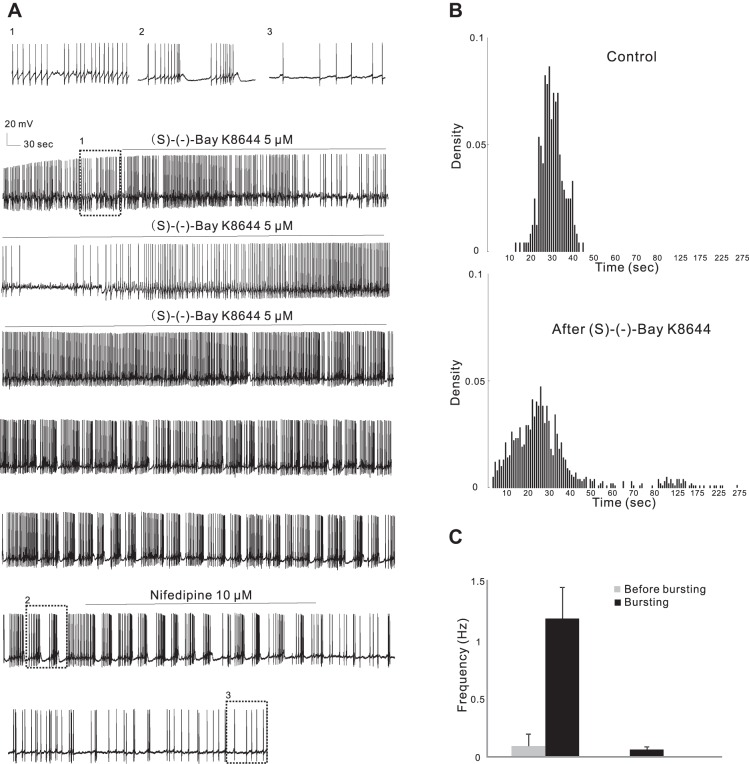Fig. 3.
DHP site LTCC activator (S)-(−)-Bay K8644 converts firing pattern in WT mice. A: continuous current-clamp recording from a representative cell showing that (S)-(−)-Bay K8644 (5 μM) converted regular firing to burst firing that could be blocked by nifedipine (10 μM). B: density plot of interspike intervals (ISIs) in 0.1-s (<8 s) or 0.5-s (>8 s) bins from the same cell as in A in control conditions (241 events) and after (S)-(−)-Bay K8644 application (994 events). (S)-(−)-Bay K8644 dramatically shifted the peak to the left and gave rise to a secondary peak corresponding to the frequency of burst firing cycles. C: the firing frequency in the bursts was much higher than that before bursts (left), and the frequency of bursts was low (right), representing long pauses of firing between adjacent bursts.

